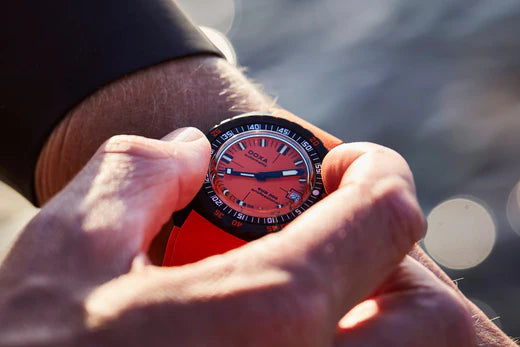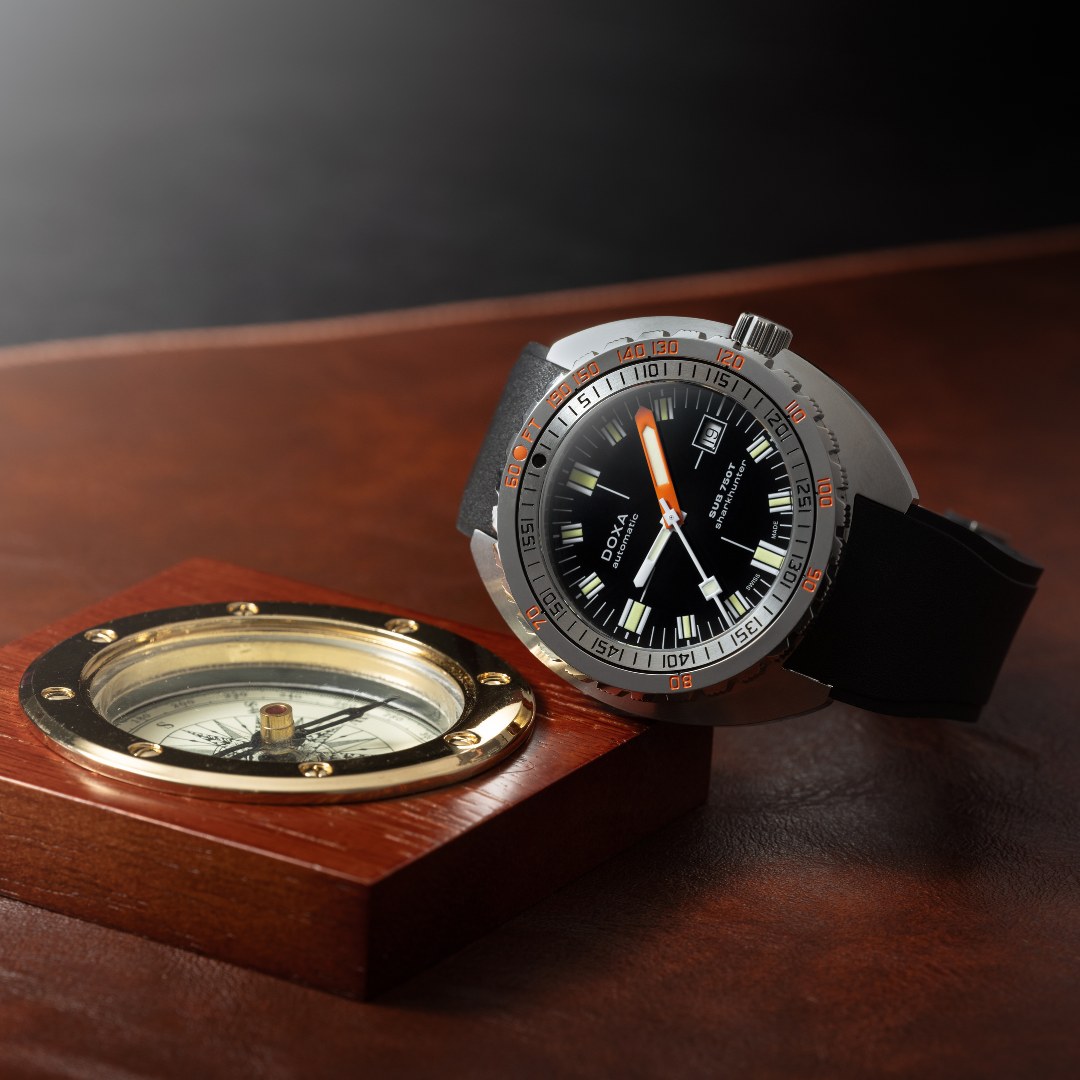
Code name: Non-Deco
In 1966, DOXA invented a unique bezel which would go on to fundamentally simplify diving, maximising enjoyment whilst reducing the associated risks.

Today, both shore and boat diving seem accessible to almost everyone. But, if this is the case, it is only because of the efforts of certain parties! They have devoted their expertise and experience to developing high-quality instruments for this professional practice which has become a sport, a hobby, and a passion for a broader public.
Pioneer of the depths
DOXA was one of a few brands which understood, very early on, that diving had the potential to become a popular activity that could appeal not only to enthusiasts interested in the seas and oceans, but also to boaters and holidaymakers.
After having determined that the orange was the most visible dial colour at depth, DOXA collaborated with an American diving equipment supplier, U.S. Divers Company. Together, they developed the scale on a bezel which indicates the permitted dive time for divers according to their depth – indicated in feet (ft) or metres (m), with a shared "zero" unit. This table of correspondence, transcribed on the watch bezel, is taken directly from that used by the U.S. Navy.

The key to this bezel is that it is unidirectional, which prevents any accidental movement which could adversely affect the outcome of the dive. This invention was duly registered in the United States on 14th April 1967 by Urs Eschle, the head of development at DOXA at this time, with full intellectual property rights being passed on to DOXA the following year (2nd April 1968) for a symbolic dollar.

Immediate adoption
In Europe, the French Navy placed an order for the SUB 300T model (43 mm, with an ETA 2872 base) which featured this bezel showing the "no-decompression" table, which links depth (in metres and feet) with immersion time (in minutes). The table therefore gives an immersion time correlated to a given depth. It was a major step forward for divers who, until then, had to memorise the arithmetic linking immersion time and depth which meant they would either have to add, or could avoid, lengthy decompression stops.

A question of nitrogen
Why are these decompression stops so vital? In simple terms, each depth has a corresponding maximum period of time that a diver can spend there before they have to take a pause to decompress when they return to the surface. This is because the longer they stay at depth, the more compressed inert nitrogen gets taken up by the tissues. They will then need to make stops at different depths to allow their respiration to clear this excess nitrogen from the tissues. If they do not, there is a risk that residual bubbles will get into the joints, lungs and spine.
The fundamental principle of the bezel invented by DOXA is that it gives the limit (time associated with a depth, or vice versa) that cannot be exceeded if the diver wishes to avoid having to make these stops. This is why it is generally known as the "no-decompression" bezel. The diver simply has to set the zero marker opposite the minute hand when they dive, and the scale will show when to surface for depths from 60 feet (60 minutes) to 190 feet (4 minutes).

Minimum calculations, maximum enjoyment
This bezel with its dual scale is not simply a calculation aid for the diver: it considerably lessens the mental effort required during diving – which plays a crucial role in maintaining physical integrity during an exercise known to affect the intellectual capacities. The bezel patented by DOXA allows divers to know, at a simple glance, when they started their dive, and what time periods and depths must be observed to avoid the tedious decompression stops.
To see a simple illustration of how the "non-deco" bezel made by DOXA works, click this link: https://youtu.be/YAUhwRrCp1w?t=137




